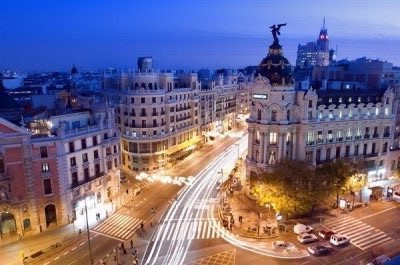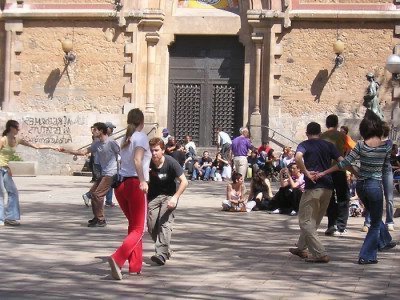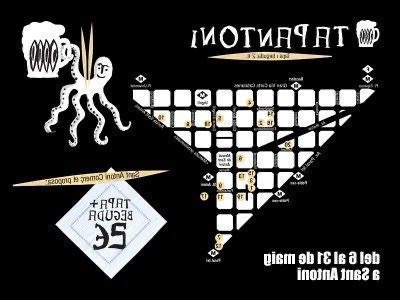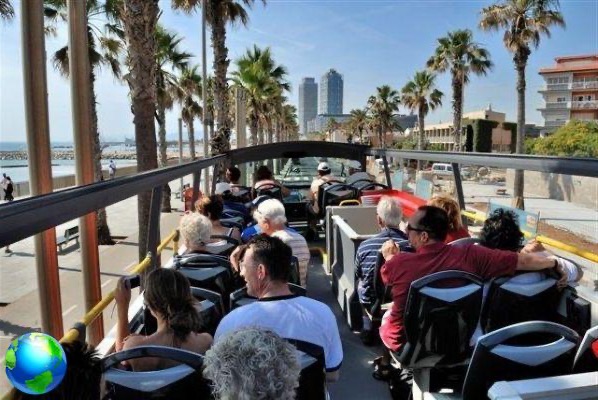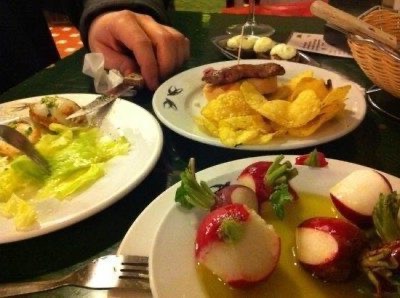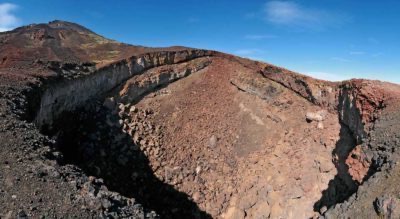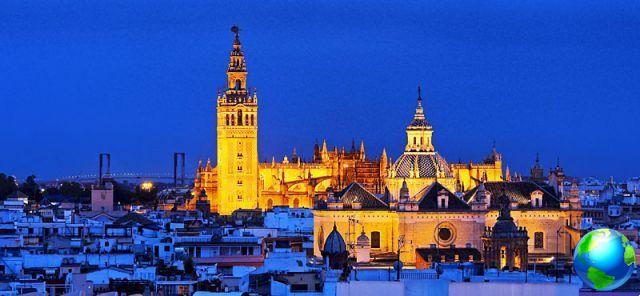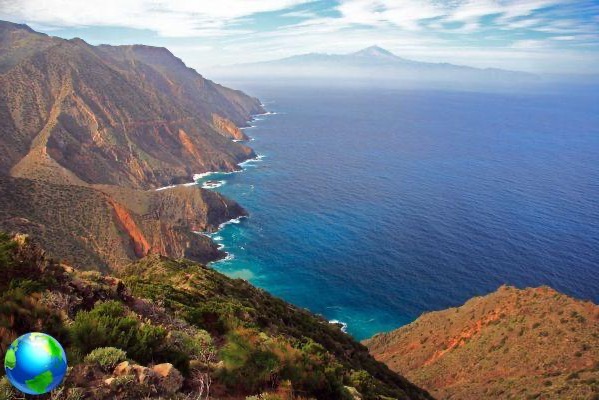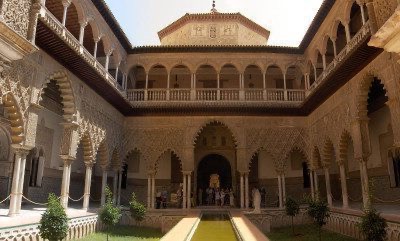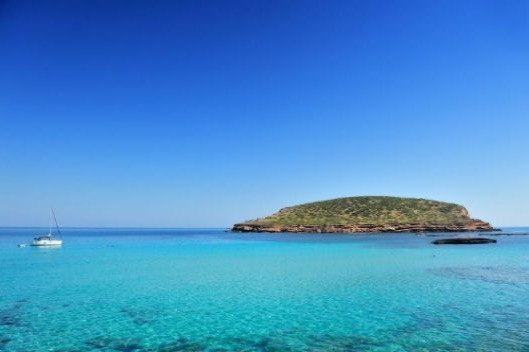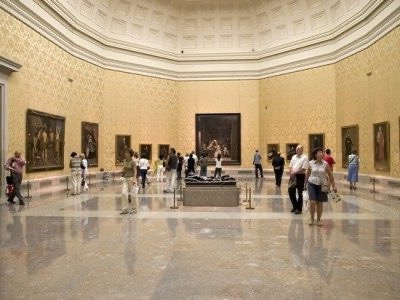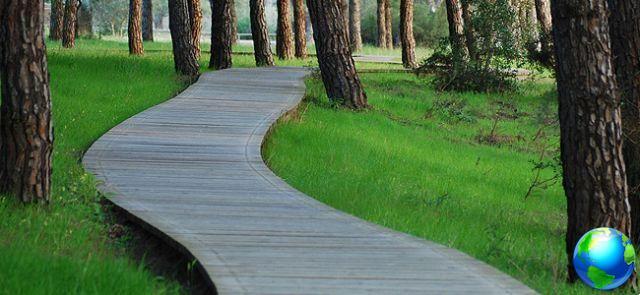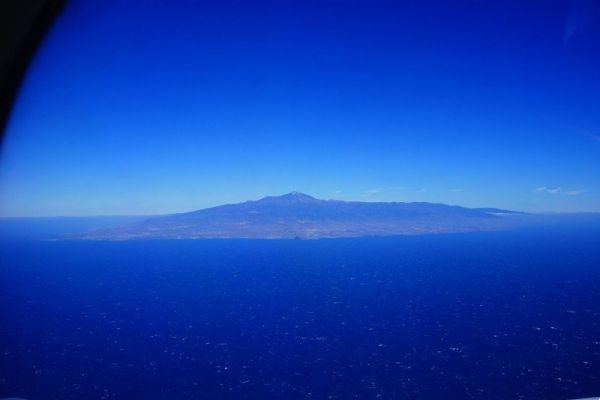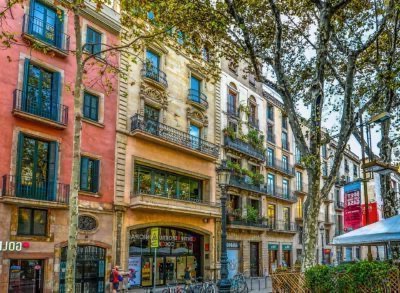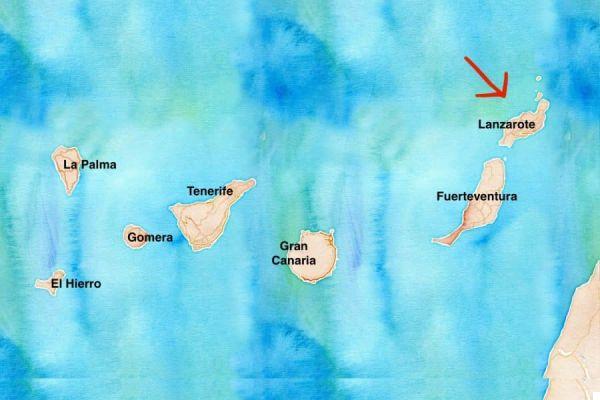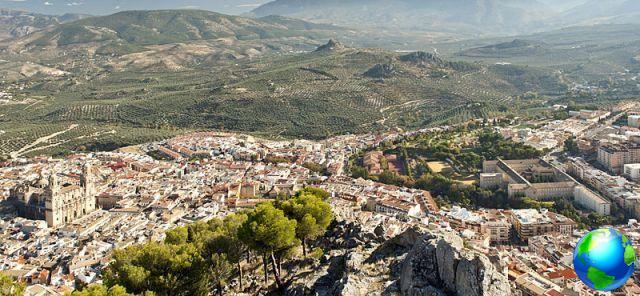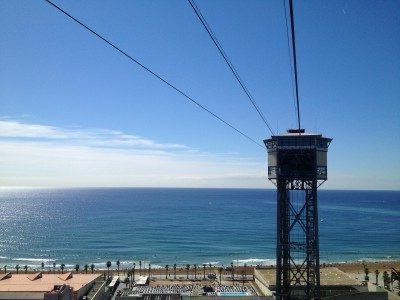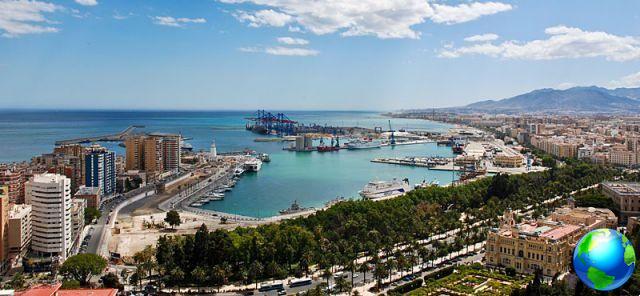
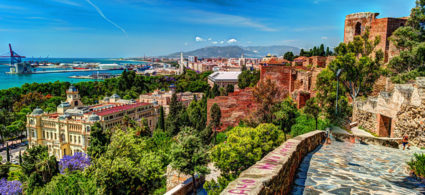
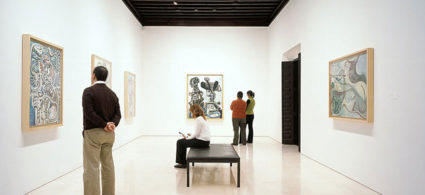
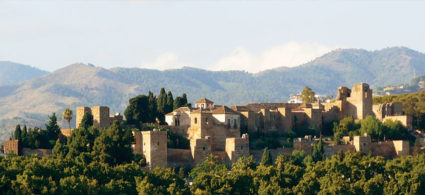
For several decades Malaga it was seen by tourists only as a base of support to then move to the seaside resorts of the Costa del Sol. Thanks to a far-sighted territorial marketing action, the city has been able to regain a leading role in tourism in Andalusia.
Interesting things to see in Malaga certainly not lacking. The top attractions of Pablo Picasso's hometown are naturally the house where the brilliant painter was born and the museum dedicated to him. For great views over the city, climb to the top of Malaga's two famous Moorish-style buildings, the Alcazaba and Gibralfaro Castle.
Too hot? Parks, gardens and fruit and vegetable markets are the best shelter from the sun, or you can cool off with a dip in the sea.
Here 10 must-see attractions in Malaga that will introduce you to this fascinating city of multiple souls.
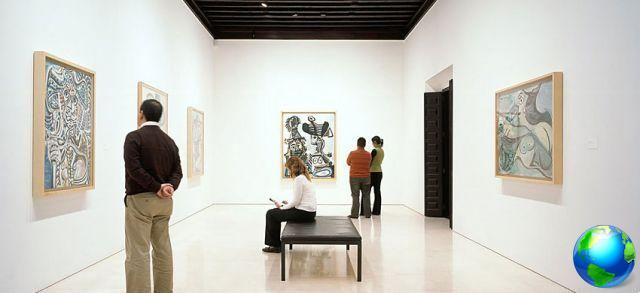
The most visited attraction in Malaga is the Picasso Museum Malaga (MPM), a tribute to the brilliant artist who with his technical innovations and his unmistakable style opened a new era in the history of art.
It was Pablo Picasso himself before he died to express the desire for a museum dedicated to him in his hometown, but it took 40 years for his wish to be realized: MPM was inaugurated in 2003.
Housed within Bevilacqua Palace, a splendid historic building with typical Andalusian architecture, which mixes elements of Mudejar and Renaissance styles, the museum exhibits a collection of over 200 works that includes paintings, illustrations, engravings, ceramics and drawings from the beginning of Picasso's career up to the years of maturity . A complete excursus into the life and works of Picasso.
You can continue your Picasso themed itinerary by visiting the home, Christmas located in the Plaza de la Merced, which today houses a museum with works by the Malagueño painter and other contemporary artists.
Find out more about the Picasso Museum in Malaga
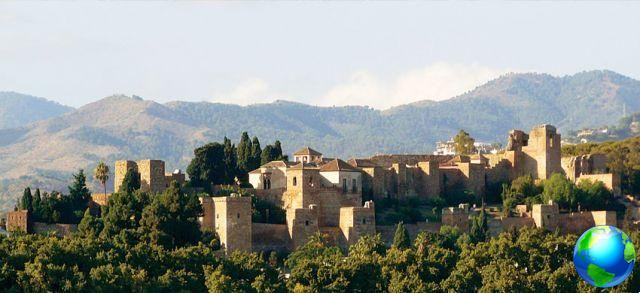
The most impressive monument of Arab origin in Malaga is theAlcazaba, a palace-fortress built by Muslim governors in the XNUMXth century that dominates the city from above.
To visit the Alcazaba you will have to follow an uphill path that develops within the double walls of the fortress. It is a fascinating journey through the history of the city, during which you can admire ancient ruins, statues, columns, royal rooms, enchanting Arab gardens, an archaeological museum and the remains of a Roman theater.
Despite the climb, visiting the Alcazaba is a good way to find relief from the scorching temperatures of the Andalusian summer: this city within the city is indeed full of waterways, fountains and leafy gardens. If you prefer to spare yourself the climb, you can go straight to the heart of the Alcazaba by taking the elevator on Calle Guillén Sotelo.
The Alcazaba is also a magnificent vantage point from which to admire the bay and the port of Malaga.
Find out more about the Alcazaba
The Alcazaba is connected by a small corridor to another important testimony of Malaga's Arab past: the Gibralfaro Castle.
Perched in a scenic position on top of a hill overlooking the city, this building also originally had a defensive function but was later enlarged and embellished. Considered the most impregnable structure of the Iberian Peninsula, it became famous because it is the last fortress that the Catholic Monarchs managed to wrest from the Arabs (in 1487).
Unfortunately not much of the interior of the castle has been preserved, but you can walk on top of the walls while enjoying splendid views over the city. On clear days it is also possible to see the Strait of Gibraltar.
The castle also houses a military museum where you can see a scale model of the castle complex and the Alcazaba.
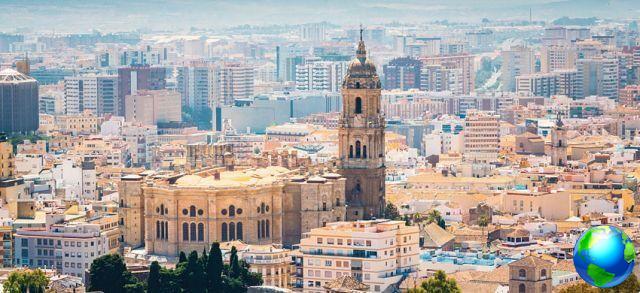
After two marvelous examples of Arab architecture, pass by to admire one of the most significant works of the Andalusian Renaissance: the Cathedral de la Encarnacion.
The Sevillians call it "the one-armed”(Stunted): to understand why, take a look at the bell towers and you will notice that one of the two has not been finished. The church project was too ambitious and the works were abandoned due to economic difficulties.
Although incomplete, the Cathedral of Malaga is an impressive sight: the façade is magnificent, with Corinthian columns and marble arches in three different colors, and the sumptuous interior that mixes different architectural styles and houses precious works of art.
The church was built on the remains of a previous mosque, of which today only the Patio de los Naranjos remains, a small, pretty garden adorned with orange trees.
The nerve center of city life in Malaga is Larios Street, the main street of the center. It is an elegant pedestrian street lined with shops and boutiques, reminiscent of the trendy streets of European capitals: perfect for those who want to shop, see the modern side of Malaga or simply take a stroll without worrying about the cars.
Calle Larios flows into Plaza de la Constitución, a popular meeting place for Malaga residents. Behind the square opens up a small alley that seems light years away from the noise and chatter of Calle Lario and Plaza de la Constitución: the Chinitas Passage. Here once was a flamenco club celebrated by the poet Federico Garcia Lorca.
With a short walk from Calle Laio to Pasaje de Chinitas you can see the different faces of the city of Malaga, sometimes exuberant and sometimes nostalgic.
Overlooking the sea, Malaga is a city that allows you to combine cultural visits and lazy afternoons on the beach in a single holiday.
The closest beach to the center of Malaga is Malagueta Beach, a beach of golden sand with large grains, a typical city beach that can be easily reached on foot or by bus (the car is not recommended because it is difficult to find parking in the area). Due to its proximity to the center and the abundance of services, bars and restaurants it is always very crowded, but it is mostly frequented by tourists.
The Malagueños prefer to move elsewhere: from Playa de la Malagueta begins a row of beaches that continue uninterrupted for several kilometers. The more you move from the center, the quieter the beaches are, the prices of the restaurants drop and the quality of the food increases: take advantage of it for a good feast of fresh fish.
Find out more about the beaches of Malaga
One of the best ways to get in touch with the local reality is to visit the markets of the city. Among the markets of Malaga the most beautiful is the Atarazanas market, located in the historic center (approximately in the middle of Calle Lario).
It's an indoor food market where you can buy fresh produce or enjoy mouth-watering sandwiches and tapas while sipping an iced cerveza, all at a fraction of the cost of tourist-frequented bars and shops.
Of the original structure, only a horseshoe-shaped arch remains; the iron building that we admire today dates back to the nineteenth century. More than the architecture, it is the lively atmosphere of the market, with the shouting of the vendors and the bustle of the customers that make this corner of local life an attraction that deserves to be included in the program of every holiday in Malaga.
Parks and gardens
It's hot in Andalusia. Much. To find shelter from the heat, take refuge in one of the beautiful parks and gardens of Malaga.
In the surroundings of the Alcazaba is the Park Walk8, a pretty street lined with palm trees. Along the southern side of Paseo del Parque opens the Walk of Spain, a garden full of tropical plants where you can find a little cool even in summer.
If you are willing to move a little from the center, visit the La Concepción Botanical Garden, which is about 4 km away. It is an oasis of tropical plants belonging to 5000 different species, embellished with waterfalls and artificial lakes.
If you want to see a different Malaga take a walk in Soho neighborhood, west of the modern Muelle Uno area and not far from the port and the chic shop windows of Calle Lario.
Until a few years ago it was a run-down neighborhood, but it got new life thanks to an urban redevelopment project with which it was transformed into a trendy neighborhood, full of cultural ferments.
The main attraction of Malaga's Soho are the huge ones murals with which the buildings in the area were decorated, made by local and international artists.
King's Path
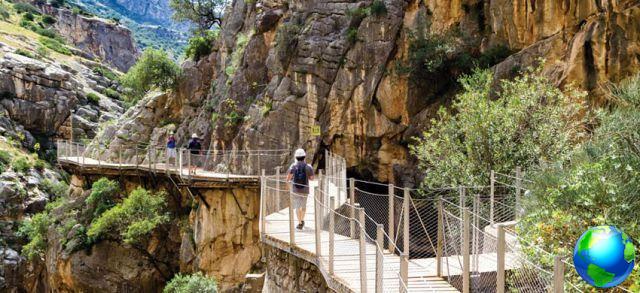
In recent years, many tourists come to Malaga and then continue inland and take one of the most popular excursions in Southern Spain, namely the King's Path.
It is an adrenaline-pumping walking route that develops along wooden walkways leaning against vertical rock walls that form a gorge crossed by the Guadalhorce River.
In the past, this walking route was very dangerous, and many people have died sliding down the precipice. Thanks to a very expensive restoration, the path is now completely safe but is strongly not recommended for those suffering from vertigo. For everyone else it is an unmissable attraction.




